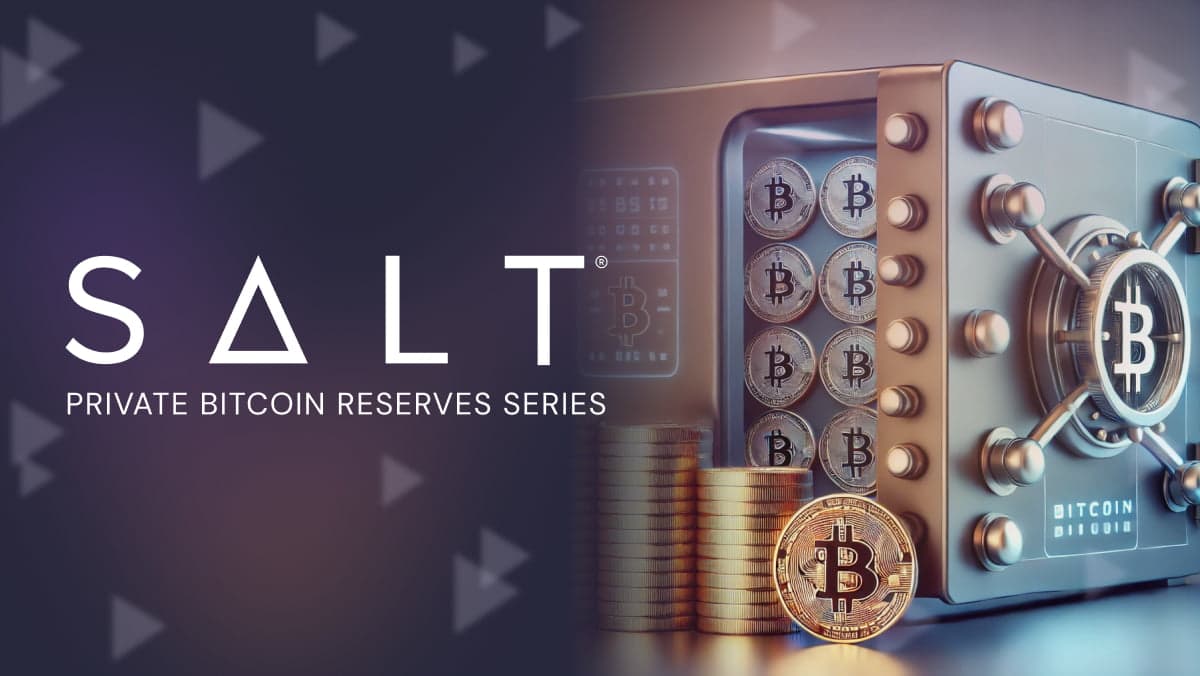By Jenny Shaver
A look at indicators of industry maturity and assessing the right kind of investment risk.
(This article is adapted from a keynote speech delivered at the April, 2019 Crypto Invest Summit.)
I often get asked, whether it’s by former colleagues, or people I meet at social events, or even my dad, “Why would people invest in crypto? It seems risky.”
Depending on your investment strategy, sure, it’s risky. But…it’s a different kind of risky than it was even two years ago.
So, what’s changed?
Crypto asset performance isn’t correlated to any other asset class. It doesn’t move with fiat inflation or commodities prices. It’s not tied to the performance of a company like a security. That inherently creates risk but also opportunity for significant gain. This is a risk that we as an industry weather and accept.
The perceived risk my dad is referencing has less to do with crypto asset volatility and more to do with the perception that the crypto industry reflects the lawless, undisciplined behavior and unbridled speculation akin to the caricature of the wild west.
This perception is inaccurate.
I was having a conversation with a colleague about this very topic and he said,
“Our industry isn’t in a state of chaos like The Wild West. Our industry is more analogous to The Space Race.”
John F. Kennedy said of The Space Race, “We choose to go to the moon in this decade and do the other things, not because they are easy, but because they are hard.”
Blockchain technology attempts to solve previously unsolvable problems. The complexity of the technology and the nascent nature of the regulatory framework, requires new and emerging expertise. It requires risk takers to set new precedents.
This pursuit has resulted in a pouring in of talent and capital which have given rise to increasing competition and meaningful industry advances. We are seeing this manifest via several indicators of industry maturity.
Broader Adoption
Despite the crypto winter, or bear market, or whatever we want to call 2018, we saw a nearly doubling of the amount of individuals who hold crypto assets. A survey published by Forbes suggests that crypto holders are skewing older and more affluent than previously thought.
UTXO analysis conducted by Delphi Digital suggests that most crypto holders who held a position longer than five years largely sold off their holdings, partly contributing to the downturn, but clearing the way for new investors seeking engagement with new types of products.
From an institutional perspective, traditional financial services and crypto financial services are converging. We are seeing validation of crypto assets in traditional companies incorporating crypto services or blockchain infrastructure.
Institutional adoption also extends to partnerships and service providers for crypto companies. Just in the past 12 months, I have seen an increased willingness of vendors and service providers to work with crypto companies. Companies who were saying “no” to providing services for us 12 months ago, are now actively trying to work with us.
Compliance
US-based crypto companies have made significant strides to create risk and compliance programs that are comparable to traditional financial institutions.
This includes a robust KYC/AML program, customer data protection standards, SOC compliance, compliance monitoring of blockchain addresses, and dedicated resources to oversee compliance programs.
As our industry attempts to navigate its purpose of removing barriers for transferring value, even regulatory barriers, compliance programs at this stage of our industry maturity, are a necessary step for broader adoption and mitigation of regulatory risk.
Insurance
Insurance has been a hot topic as of late because it’s a relatively new advancement in our industry. But it’s meaningful.
The fact that insurance providers are willing to underwrite affordable insurance policies for crypto-specific operations is a strong indicator that we as an industry are demonstrating the safety of holding crypto assets.
I urge investors to ask critical questions about the specifics of insurance programs — the coverage amount, incidents covered, and the claims and payout process and timeline.
The good news is that as our industry continues to prove itself, the competition amongst insurance underwriters will increase, which, in turn, will drive down costs.
Market Data Integrity
Our industry is dealing with our own data integrity issues just like any other high volume, high velocity industry.
Recognizing these gaps and the dependence on reliable market data to drive participation, there has been a surge of data research companies dedicated to improving the quality of market data.
The recent incident of BitWise calling out CoinMarketCap for overstating trading volumes, is a great example of our industry’s maturity in this area.
This is significant not just because companies like BitWise are expending resources to conduct due diligence on our industry’s leading data providers, but also because of CoinMarketCap’s acceptance of accountability to address the issue and improve their product.
It demonstrates that we are holding ourselves to a higher standard, and that investors will have increasingly accurate sources of information to make informed decisions.
Response to Scalability Challenges
JPMorgan announced earlier this year that it is investing in its Quorum blockchain infrastructure to facilitate payments in a more efficient manner using its dollar-backed JPM Coin.
It’s currently being piloted with a few institutional clients but is promising to revolutionize their payment processing.
To realize this potential will require blockchains to dependably support concurrent transactions at a scale that is not yet possible, or at least not yet largely practiced and tested.
Our industry is investing significant resources to solve this problem, and promising solutions are surfacing.
A second layer protocol solution, Lightning Network, is perhaps the most exciting advancement in the race for scalability.
For crypto to deliver on its potential of revolutionizing the transfer of value on a global scale, it must rise to meet the challenges of scale.
We’re working on it.
More Sophisticated Investment Products
What I see as the most exciting indicator of market maturity is the increasing diversification of product offerings.
Interest-bearing accounts are seeing promising early performance, futures and options are now available on select exchanges, as is trading on margin, and ETFs are on the near-term horizon.
What I have seen is an industry response to the unique nature of crypto assets and the needs of crypto holders. In crypto lending, for example, simply offering a crypto-backed, USD loan, does not address all market uses cases.
If 2018 has taught us anything it’s that we need products that drive market engagement in both bear and bull markets.
Our industry now offers several ways for investors to participate — directly through investing in crypto assets, less directly by offering fiat capital pipelines for interest-based products, or indirectly through investing in the growth of crypto companies and projects.
These options are allowing for a wider breadth of investor participation with varying risk appetites.
I return to the question, “Is crypto investing risky?”
When we empower a company like Charles Schwab to manage our wealth portfolio, we know there is some risk in the investment strategy but we don’t worry about them losing or mismanaging our money.
There are enough responsible companies in the crypto industry that can provide the same amount of assurance about the handling of your crypto assets. I encourage investors to seek out reputable companies and ask tough questions about their operations due diligence. Watch how companies respond to industry incidents like a hack or key compromise event. Our industry is still young and we’re still learning our vulnerabilities. The good companies will have a disaster recovery procedure that cure customer losses.
We have seen what happens when more resources are deployed to our industry. The result is more talent, innovation, and increasing sophistication that results in better products and better opportunities for investors.
Everyone wins.
The views and opinions expressed in this article are those of the author and do not necessarily reflect the official policy or position of SALT Lending.








